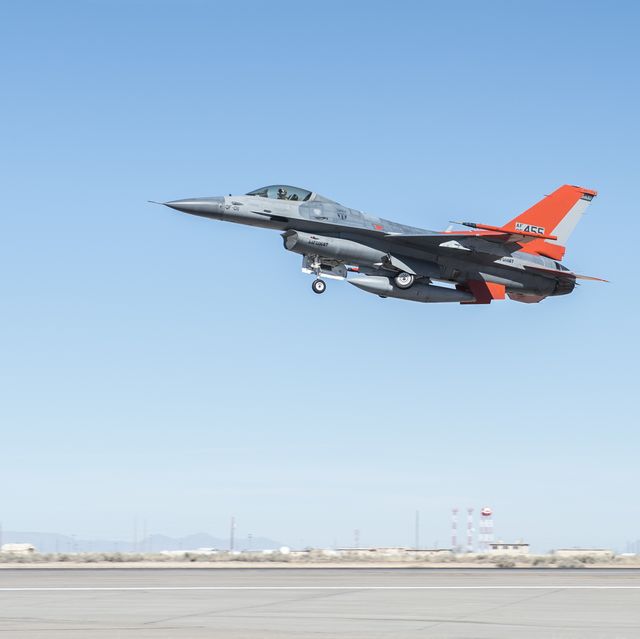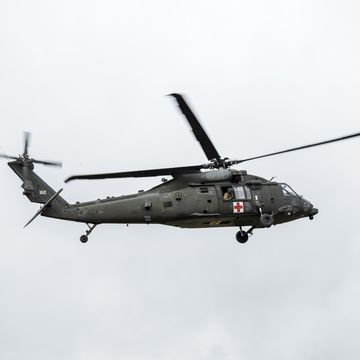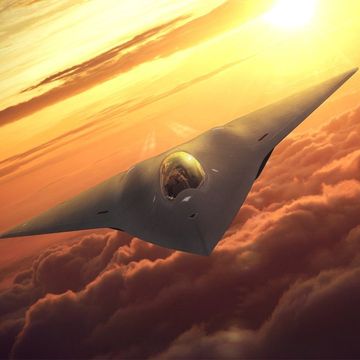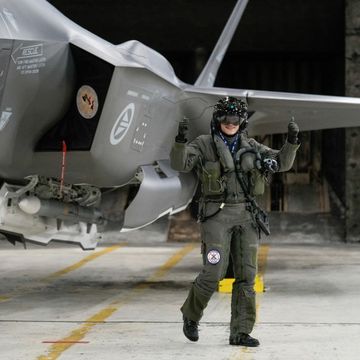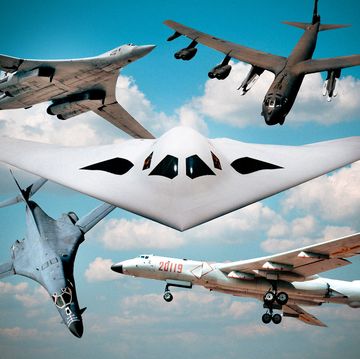- The Air Force is retiring F-16 fighters as the F-35 fighter comes on-line.
- The F-16s are stored at “The Boneyard” in Arizona.
- About thirty F-16s a year are brought out of storage to become remote-controlled aircraft.
The F-16 Fighting Falcon has had a distinguished history, and the U.S. Air Force is capping it off with a bang. Every year the service modifies F-16 fighters into F-16 drones, transforming them from hunters to the hunted. The resulting drones, known as QF-16s, are then shot down for target practice.
The F-16 entered service with the U.S. Air Force in 1980, and over the past forty years has served in various conflicts around the globe. The Air Force purchased the F-16 over the course of at least two decades, and some planes are older than others. The oldest of the planes end up at “The Boneyard” at Davis Monthan Air Force Base, Arizona. There, the heat and dry air keep old planes in good condition while the services figure out what to do with them.
In 2010, the Air Force began converting F-16s to QF-16s (Q standing for drone). According to Wired, this year 32 of the drones were pulled from Davis Monthan and modified using a Boeing-designed Drone Peculiar Equipment kit. The F-16 is relatively easy to transform into a drone because, instead of older aircraft such as the F-4 Phantom, the F-16 was a fly-by-wire aircraft in which onboard computers translate the pilot’s commands into action. The F-16 was one of the first jets in which computers, not pilots, issued direct controls to the aircraft. Tapping into that system is much easier than installing physical actuators that push manual flight controls.
The kit allows the drone to take off and land, and perform fairly complicated aerial maneuvers. Typically the drones don’t land, however, because they’re shot down. The QF-16s are used as target practice by manned fighters launching air-to-air missiles. The Air Force’s “Skyborg” AI software, meant to act as an R2-D2 to a pilot in a manned airplane or a computer wingman in a separate, unmanned aircraft, could also be adapted to the QF-16, turning it into a weapon-carrying wingman for a F-22 or F-35 fighter.
The U.S. Air Force has plenty of F-16s in the Boneyard—at least a hundred are lined up in neat rows right now in the Arizona desert. Eventually all Fighting Falcons will make one last manned flight to the Boneyard, and a select few will receive new equipment and a high-vis orange paint job to the horizontal and vertical stabilizers.
Then, it’s time for one last flight before being blasted into bits over the Gulf of Mexico, an unsentimental ending for one of the most well known fighters in U.S. history.
Source: Wired

Kyle Mizokami is a writer on defense and security issues and has been at Popular Mechanics since 2015. If it involves explosions or projectiles, he's generally in favor of it. Kyle’s articles have appeared at The Daily Beast, U.S. Naval Institute News, The Diplomat, Foreign Policy, Combat Aircraft Monthly, VICE News, and others. He lives in San Francisco.
